Sustainable crayfish venture wins accolades
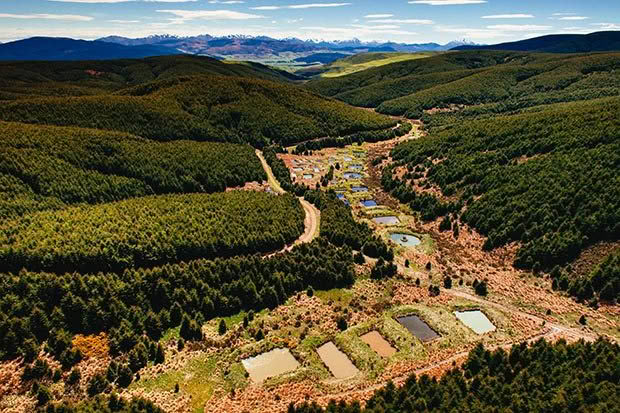
A flagship venture in the forests of Southland and Otago aligns commercial interests with conservation ideals
Words: Anna Tait-Jamieson
John Hollows says he never tires of catching crayfish. It’s the anticipation. All eyes are on the net as he hauls it in, hand over hand, water streaming from the mesh until a final heave delivers the prize: a dark bundle of claws, feelers and tails, flapping and rattling in protest at being lifted out of the pond.
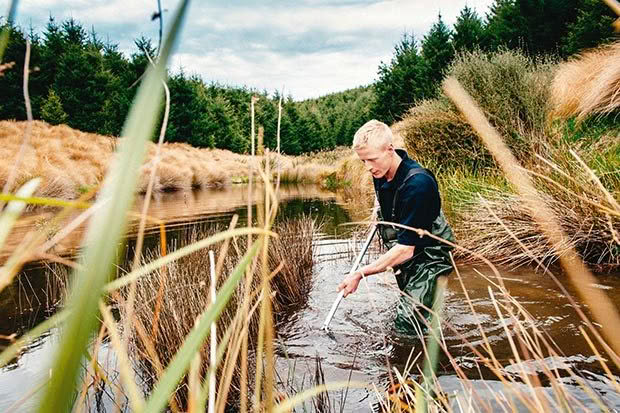
These are freshwater crayfish, commonly known as kōura and branded Keewai by forestry company Ernslaw One, which had the brilliant idea of farming them in the fire ponds of its South Island forests. Using an under-utilized resource (the ponds are only of use in the event of fire) to provide an additional revenue stream is clever in itself, but it’s the company’s conservation values that have won it accolades, including the Spirit of New Zealand Award at the recent Outstanding NZ Food Producer Awards 2017.
The Keewai venture is as unique as it is innovative. Ernslaw One is helping to save the threatened South Island kōura by farming it – sustainably and sympathetically – in a pristine environment that mirrors its natural habitat.
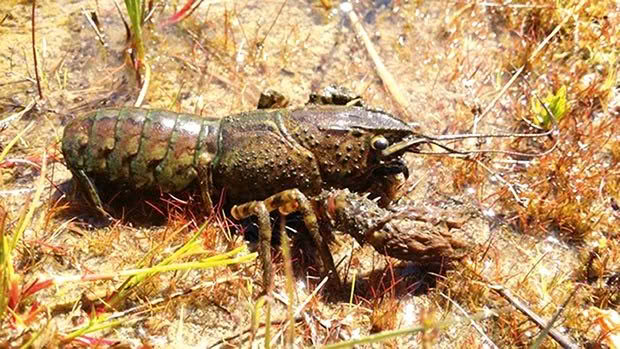
John Hollows is the aquaculture manager in charge of the project. He is assisted by forestry workers who are co-opted to help during the short harvest period. The entire company is behind the project, but no one is more enthusiastic than John, a scientist and outdoorsman who reckons he’s landed the perfect job.
A butcher by trade, he says he came to aquaculture quite by chance when he met an American biologist who was recording fish stocks in Lake Malawi in Africa. The American needed a hand, John obliged and he says he’s never looked back.
“It wasn’t work. I would have done it for nothing: sitting on a boat on a beautiful day, counting fish.”
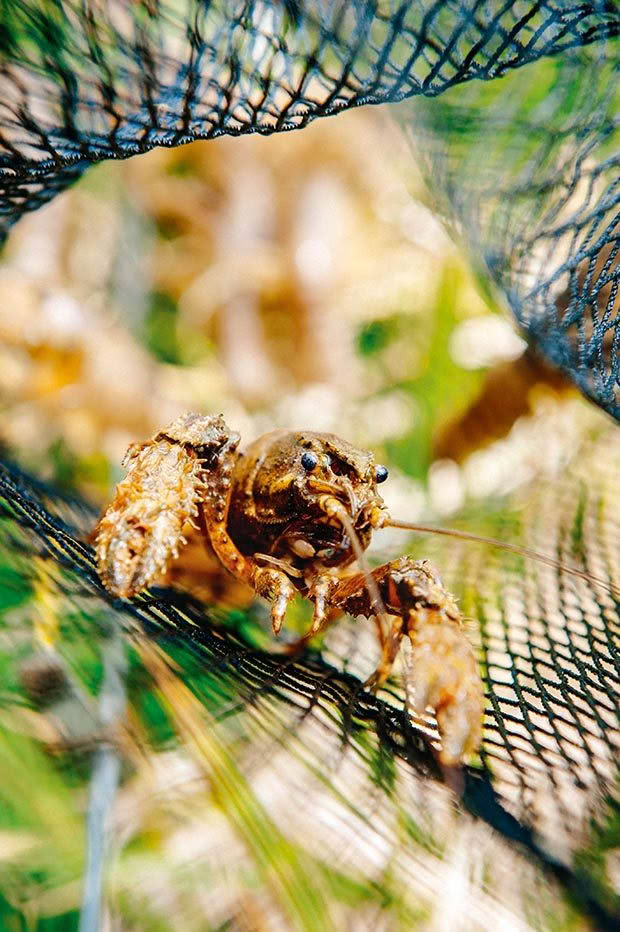
Back in New Zealand, he put himself through university, studying zoology and environmental science before completing a master’s degree specializing in freshwater crayfish. He believed there was a future in farming the high-value crustacean, so when the forestry company approached him he didn’t hesitate.
“You don’t get many opportunities to follow your passion in life. I was pretty excited because I knew that what was needed was time and scale, and Ernslaw had that.”
Five years on and he’s now counting crayfish. So far he’s stocked more than 500 ponds in 11 forests in Southland and Otago, all at various stages of readiness.
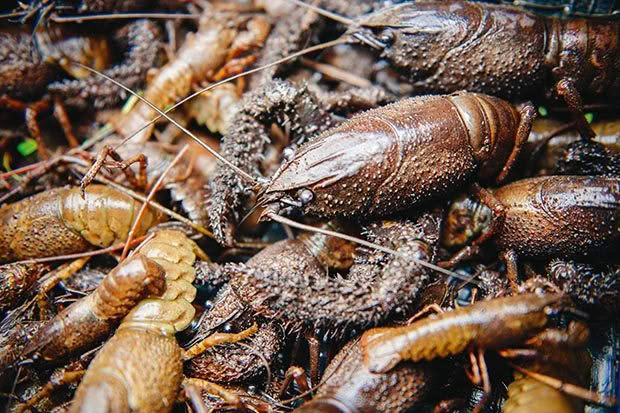
Today we’re in Glenelg Forest where the tracks are sodden and the fir trees are still dripping with water from yesterday’s downpour. It always rains in the Catlins but this morning the sun has nudged its way through the clouds and it’s pleasantly warm on the edge of the pond as John and his assistant Callum Kyle sort through the catch.
They have landed 187 kōura from four set nets. Of these, 30 are put aside for sale. The juveniles are released, while the berried females (with eggs) and the largest males are packed into a bin with clumps of wet watercress to keep them hydrated while they travel to re-stock another pond. Hell-bent on escape, several clamber over the sides while others stand their ground, rearing up and waving enormous claws at any hand that gets close.
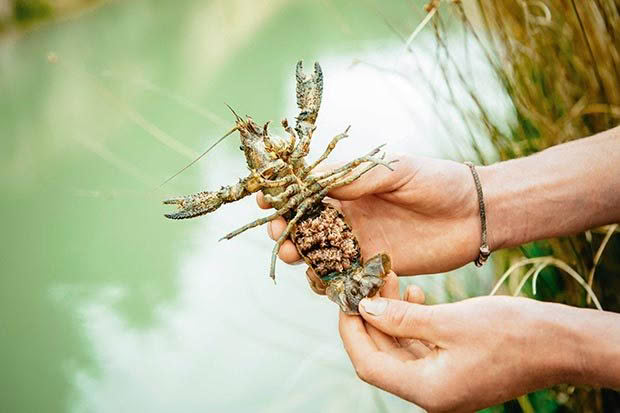
Keewai are harvested from the ponds using eel nets baited with punctured pottles of meat. The nets are left for three or four days before being hauled out. The pond is then hand-netted with a scoop net.
South Island crayfish are generally larger than their North Island cousins. They take three years to reach a saleable weight of 70 to 100 grammes in the wild but they can grow much bigger. John’s largest weighed in at 400 grammes.
“We nicknamed him Horatio and gave him his own pond with seven females.”
Crayfish that are raised more intensively grow faster but John’s developed a unique way of farming, and speed is one of the trade-offs. Keewai get no introduced food, they eat what they can scavenge in ponds that are modified to emulate their natural habitat.
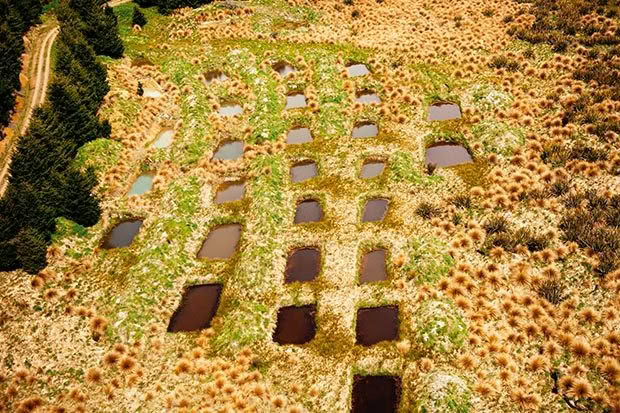
“What we’re doing is aquaculture [by definition] but actually it’s a wild sustainable harvest and we work pretty hard to ensure that it is.”
He’s not kidding. He has spent hours at a time sitting on the bottom of the ponds in his wet suit watching and thinking about crayfish behaviour. He’s come down with pneumonia, but he’s also come up with some clever ideas.
“It can be quite helpful if you think like a crayfish,” he says, pointing to a large submerged branch in the middle of the pond. It has been purposefully placed as an alternative refuge for the crayfish, which habitually cling to the banks. The interlaced twigs act as a food trap and a climbing platform, enabling them to gorge on plankton that live near the surface.
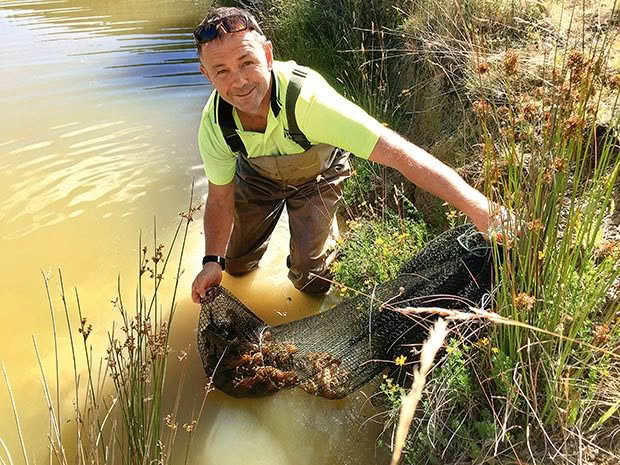
Aquaculture manager John Hollows.
The ponds themselves are rain- or spring-fed and prepared with riparian plantings of native grasses and watercress. The roots soften the sides of the banks, making it easier for crayfish to burrow, while the foliage provides food and hiding places for juveniles. New ponds are left fallow for two years while they establish their ecosystem with snails, insects, plants, algae and plankton – everything crayfish like to eat – before the breeders are released.
“Our philosophy is that nature knows best. If you don’t have to manipulate nature, you get a good product. Nature provides everything you need.”
This natural way of farming gives a lower yield per hectare but the system is self-sustaining, and there is the potential to stock 2000 ponds over time. In the meantime, the mere presence of these sensitive creatures is a big tick for the forestry company.
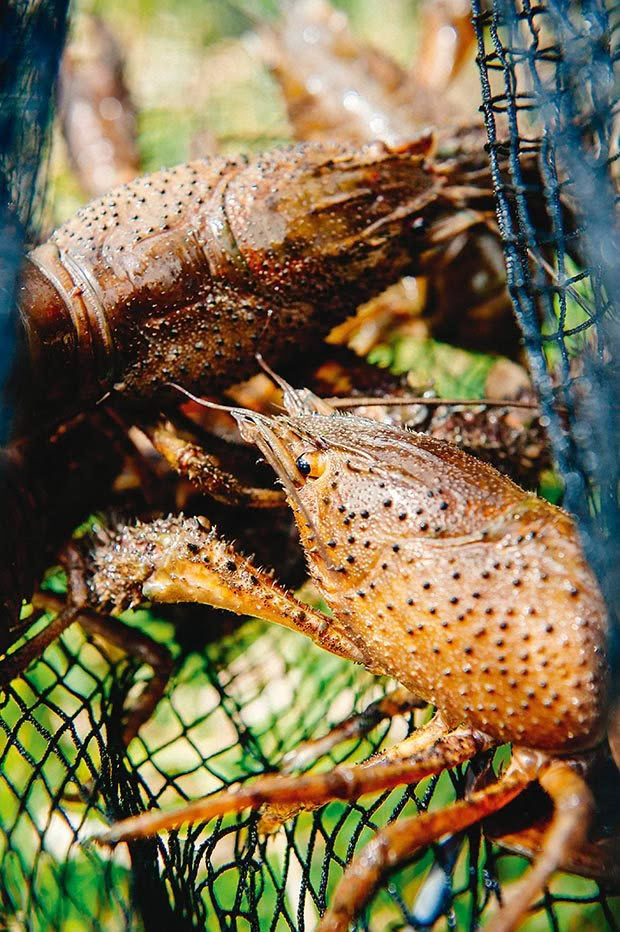
“They are the canary in the mineshaft,” explains John. “Kōura won’t grow in polluted environments. They are very susceptible to harm from pesticides, herbicides and sediments, so the fact they’re thriving here is a very good sign.”
Thriving in the ponds and tasty on the plate, the Keewai sampled were clean and sweet with none of the muddiness that often mars the flavour of freshwater crayfish. Surprisingly, John doesn’t partake. Thinking like a crayfish has given him a deal of empathy. He’ll happily shoot and butcher a deer but the Keewai are his friends – his word – and he can’t bring himself to eat them.
His customers have no such qualms. Chefs await their live deliveries with enthusiasm.
As one remarked: “When you open the box and the food tries to bite you, that’s pretty exciting.”
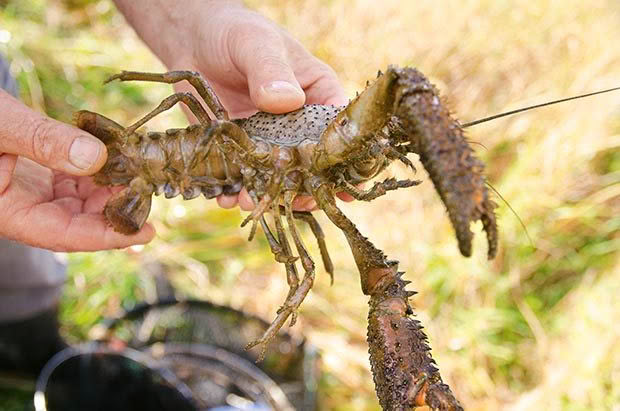
Unfortunately, very few chefs get their hands anywhere near them. Last year’s harvest – the biggest so far – netted just 250 kilogrammes, well short of the 10 tonnes needed to supply an export market that will pay US$100 (about $145) a kilogramme.
With that in mind, John is looking to the future. He’s working with interested iwi landowners in Hawke’s Bay and the South Island, and he’s written guidelines to get people started on what
he says is a great opportunity.
“We’ve developed a flagship operation and we hope others will come on board. I’d like to think that when I retire, there will be a sustainable industry, one that prides itself on producing high-quality crayfish with minimal environmental effects.”
The Ministry for the Environment’s report, Our Freshwater Environment 2017, cites the South Island koura as one of New Zealand’s native invertebrates under threat or at risk of extinction due to the degradation of freshwater habitats by land-based activities.
Despite this they are not protected. The legal catch limit is 50 per person per day.
CRAYFISH FACTS
✱ The name “keewai” is one of several words used by Maori for freshwater crayfish.
✱ Like frogs, koura are good environmental indicators. They won’t survive in polluted water, which makes them a reliable test for freshwater quality.
✱ Only five per cent make it to year two. Natural predators include eels, trout, water rats, hedgehogs, shags and dragonflies.
✱ Koura display different colour tints in different areas, probably due to their diet. In the Catlins they are more orange, in other Southland forests they can be bluish.
✱ Ernslaw One is among four crayfish farmers in New Zealand; the others are smaller in scale and semi-intensive in practice.
COOK WITH KOURA
Love this story? Subscribe now!
 This article first appeared in NZ Life & Leisure Magazine.
This article first appeared in NZ Life & Leisure Magazine.
